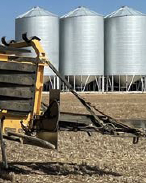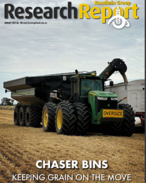This article is 7 years old. Images might not display.
Dr Jeff Cave, district veterinary officer with Agriculture Victoria, said there are a number of potential causes of downer cows and prompt treatment is essential.
Causes of a downer cow include physical injury and metabolic diseases.
Calving paralysis is usually, but not always associated with heifers and a difficult calving.
During calving, a cow’s nerve, known as the obturator nerve, may be crushed between its pelvis and the calf.
A cow with calving paralysis will appear bright and alert but have no control over one or both of its hind legs. The only treatment is careful nursing and time; anti-inflammatory drugs are useful if used early.
Calving paralysis needs to be distinguished from injuries such as dislocated hips and back injuries. Such injuries can occur in any aged animal often after an accident such as slipping.
A cow with these injuries will also be bright and alert and usually eat and drink normally. A veterinarian should be called to assess these animals.
Metabolic diseases can be distinguished from physical injuries by the presence of other clinical signs.
Milk fever is seen in older, high producing, fatter cows. A cow with milk fever will show fine muscle tremors, staggering and weakness.
Grass tetany is seen during times of stress such as bad weather on short grass-dominated pastures. An affected cow will become aggressive, excited, go down and paddle and convulse violently.
Both milk fever and grass tetany should be treated urgently with 4 in 1; additional calcium or magnesium may be needed into the vein and should be administered by a veterinarian.
Pregnancy toxaemia or acetonemia is an energy deficiency problem seen in cows losing weight or calving in poor condition. Behavioural signs will be seen before the cow goes down. Cases may indicate a dietary deficiency being experienced by the whole herd.
Mastitis, metritis or any other generalised infection causes toxaemia or blood poisoning. A cow with toxaemia will appear depressed, with a dry nose and sunken eyes. It is important to check the udders of downer cows for mastitis, and the uterus for tears or severe infections.
Prompt treatment with appropriate veterinary drugs and good nursing are the keys to successfully treating a downer cow.
For further advice contact your local veterinarian or animal health officer.






















